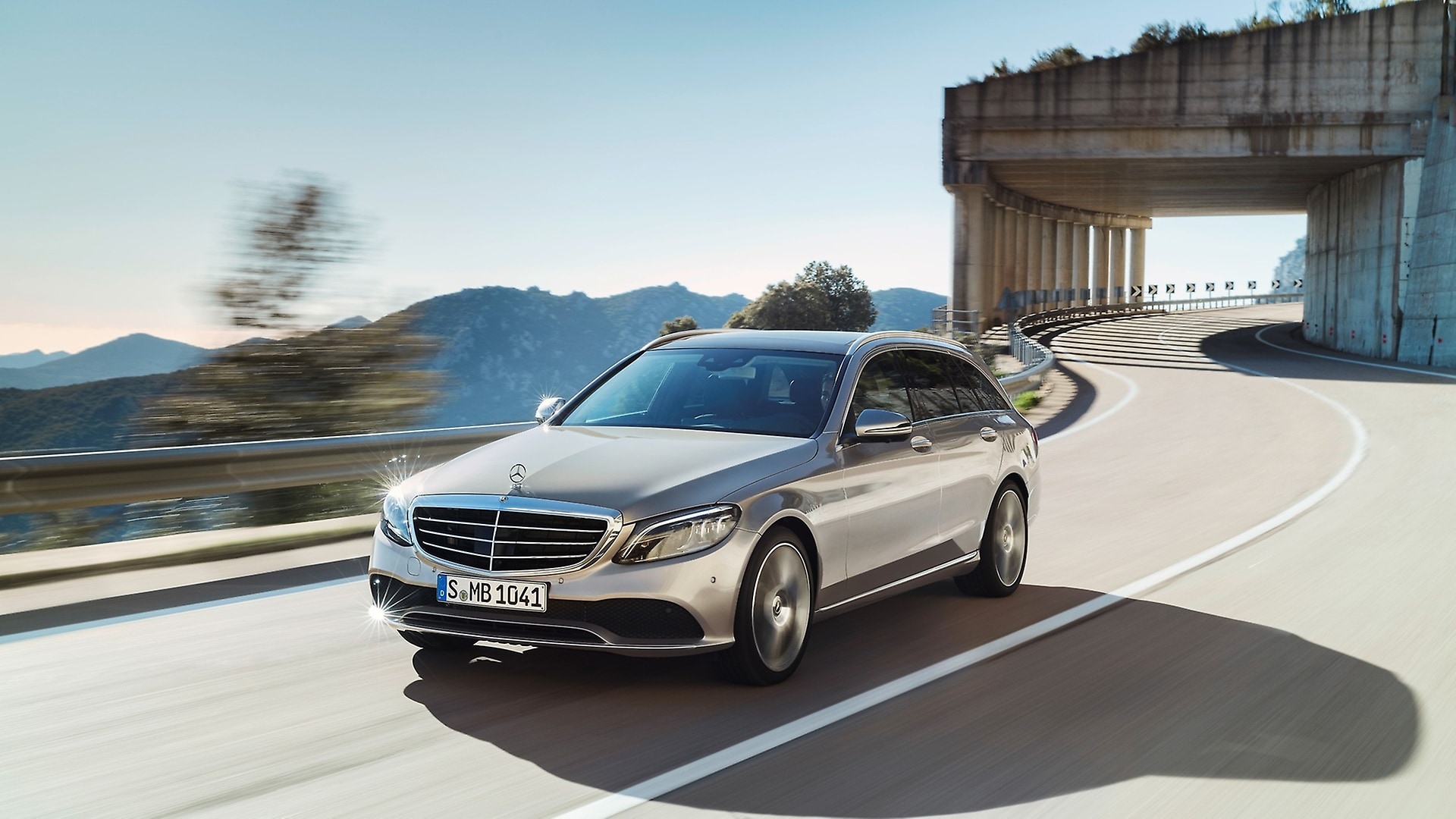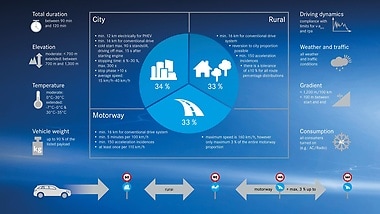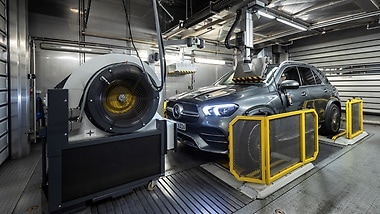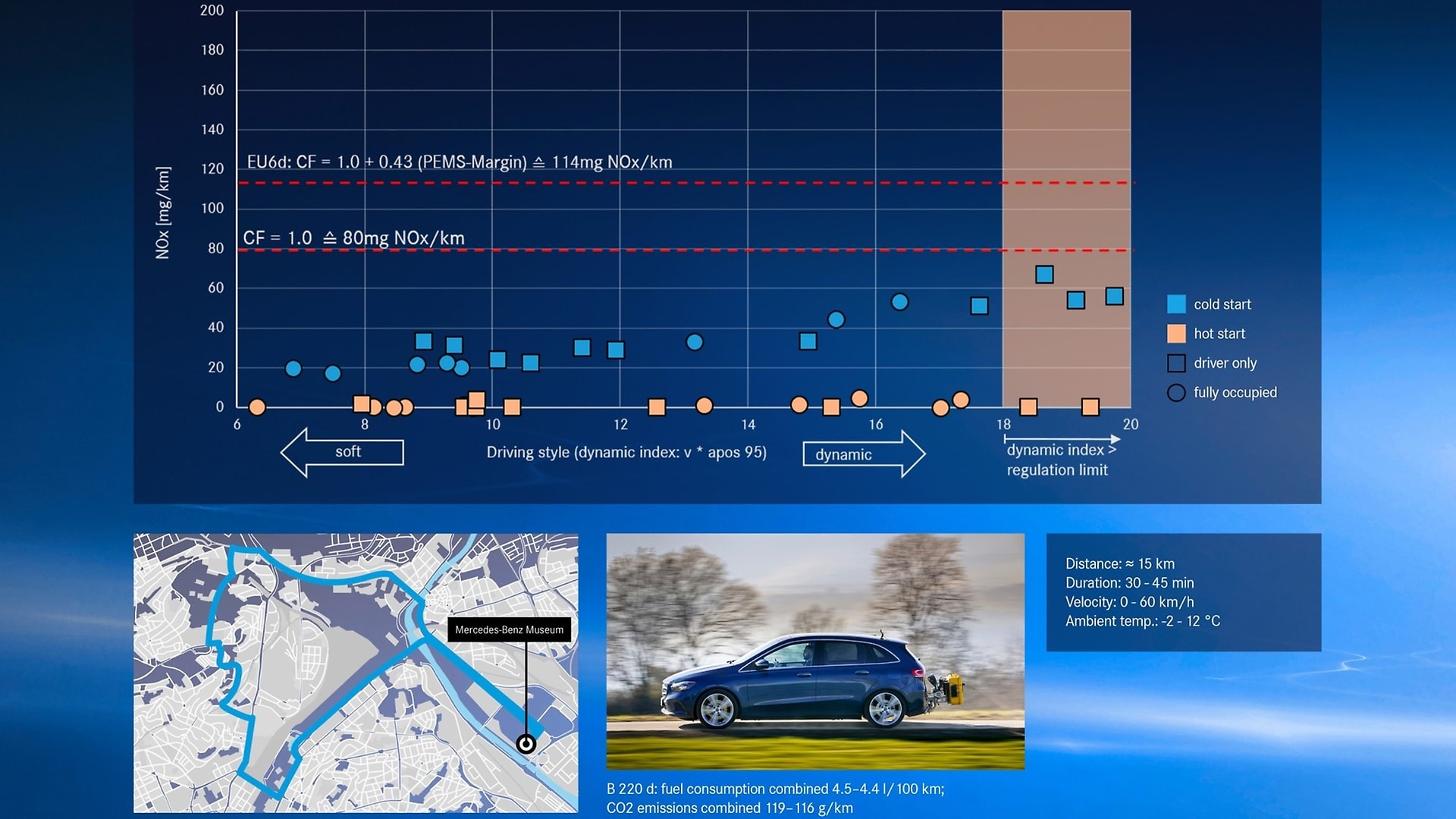The ADAC reported about its own extensive measurements in February 2019 : "The NOx emissions of current cars are far below the test bench limits in real-world driving on the road". The Mercedes-Benz C 220 d (combined fuel consumption 4.8 l/100 km, combined CO₂ emissions 126-117 g/km)* performed particularly well; "its NOx figure was hardly measurable between zero and one mg/km".
Such individual measurements illustrate that the NOx challenge can also be solved technically for diesel-powered vehicles with the new engine generation. However, the average emissions of a vehicle over many thousands of kilometers are much more meaningful in this regard: Mercedes-Benz passenger cars equipped with the latest diesel technology achieve average figures of 20 to 30 mg of NOx per kilometre under RDE conditions.
When it comes to the nitrogen oxide emissions of diesel vehicles from different manufacturers, the ADAC finds: "Euro-6d-TEMP diesels emit 76 percent less NOx on average than Euro-6b diesels and 85 percent less than Euro-5 diesels. Random sample measurements on the road have shown that the emissions reduction of good Euro-6d-TEMP diesels compared with average Euro 5 diesels is even 95 to 99 percent".
The Euro 6d standard is even more demanding due to its smaller permissible measuring tolerances. It will not become mandatory for new models until 01.01.2020, and one year later for other vehicles. Mercedes-Benz started an engine initiative in 2016, which includes the all-new four-cylinder diesel engines (OM 654 and OM 654q) as well as straight-six diesels (OM 656). On this basis, which is associated with investments of around three billion euros, a whole host of Mercedes-Benz diesel models, from the A-Class to the GLS, already comply with the Euro 6d standard today.
,xPosition=0,yPosition=0.5)








,xPosition=0.5,yPosition=0)